Exhibitions
MOMAT Collection(2023.3.17–5.14)
Date
Highlights
Welcome to the MOMAT Collection!
To briefly introduce some features of the museum’s exhibitions of works from the collection: First, its scale is one of the largest in Japan, displaying approximately 200 works each term from the museum’s holdings of over 13,000 works acquired since its opening in 1952. Also, it is one of the foremost exhibition in Japan, tracing the arc of Japanese modern and contemporary art from the end of the 19th century to the present day through a series of 12 rooms, each with its own specific theme.
In conjunction with the Secrets of Important Cultural Properties exhibition currently on view on the 1st floor, Rooms 1 to 4 on the 4th floor contain an exhibit that contextualizes Important Cultural Properties through works that are not designated as such. In Room 5 on the 4th floor we are pleased to unveil a newly acquired work by Paul Klee, and Room 10 on the 3rd floor features “Spring Festival in MOMAT,” an annual tradition at the museum.
The museum celebrated its 70th anniversary last December, and has just embarked on a new decade. This exhibition of works from the collection is a look both back at the past and forward to the future, and we invite you to enjoy the many works on view at your leisure.
Translated by Christopher Stephens
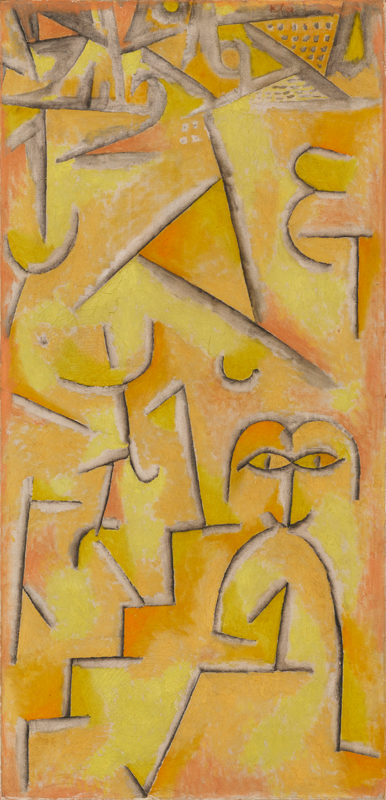
About the Sections
MOMAT Collection comprises twelve(or thirteen)rooms and two spaces for relaxation on three floors. In addition, sculptures are shown near the terrace on the second floor and in the front yard. The light blue areas in the cross section above make up MOMAT Collection. The space for relaxation “A Room With a View” is on the fourth floor.
The entrance of the collection exhibition MOMAT Collection is on the fourth floor. Please take the elevator or walk up stairs to the fourth floor from the entrance hall on the first floor.
4F(Fourth floor)
Room 1– 5 1880s-1940s
From the Middle of the Meiji Period to the Beginning of the Showa Period
Room 1 Highlights
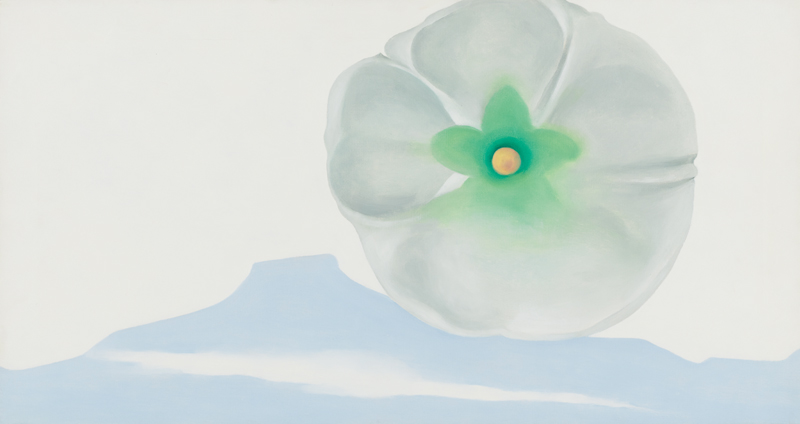
Does this edition of “Highlights” strike you as different from usual? On the occasion of a concurrent special exhibition of Important Cultural Properties, nearly all of which are by male artists, here we are showing masterworks by an equal number of male and female artists. Of course, works of art are not to be viewed on the basis of gender, nor does the mere fact that their numbers are equal here correct systemic gender imbalances. In any case, in today’s world it makes no sense to divide gender into only male and female. However, it is an undeniable fact that modern art history has been overwhelmingly weighted toward male artists and critics, and here we are endeavoring to take a first step toward questioning standards and values that have been fostered in this context, and to pave the way for future research and acquisitions. As the museum celebrates its 70th anniversary, we would like to take a new approach to the art of the past with a long-term perspective, looking ahead to the future while utilizing the acquisitions and research findings we have amassed thus far.
Room 2 Secrets of Important Cultural Properties
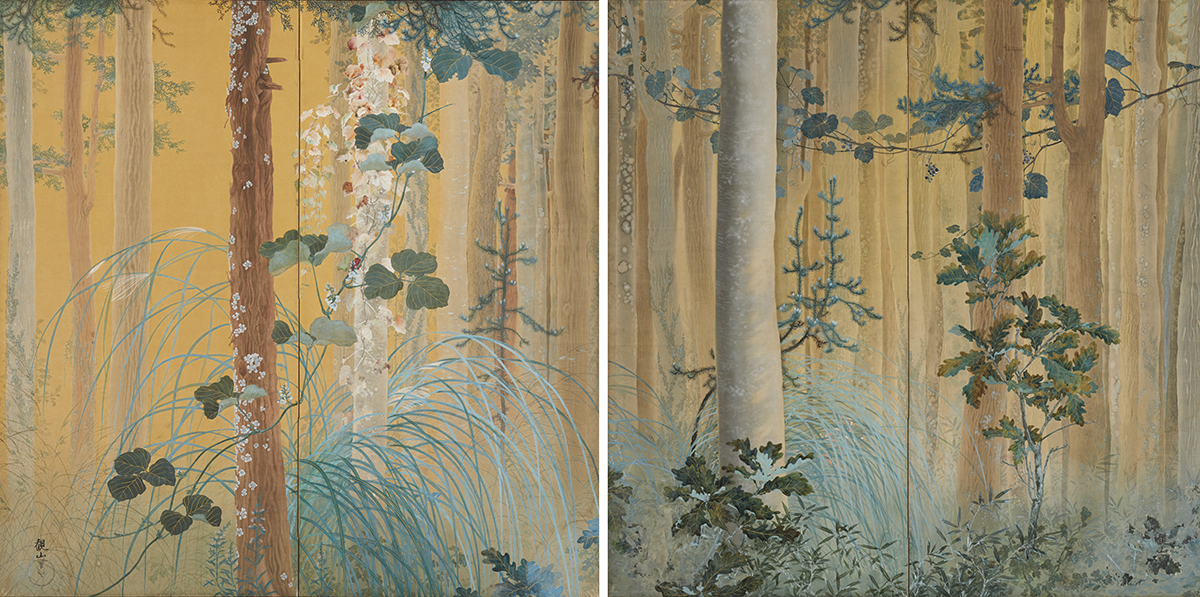
In conjunction with the Secrets of National Important Cultural Properties exhibition currently taking place on the first floor, in this room we present non-designated works by artists whose other works have been designated as Important Cultural Properties, and take visitors one step further into the history of the evaluation of these artists and their works.
Some works not designated as Important Cultural Properties are actually better known than ones that are. Hirafuku Hyakusui’s Rough Coast, for example, is far more popular than his designated work Yojyo (collection of Eisei Bunko Museum, Entrusted to Kumamoto Prefecture Museum of Art, Exhibition period March 17 to April 16) in terms of the number of times it has appeared in modern Japanese art books published thus far. The decision to designate Yojyo, which was created nine years earlier, as an Important Cultural Property was based on its innovation, artistic achievement, and influence on the art world at the time.
Also, there are works not designated as Important Cultural Properties that have, in recent years, come to draw more attention than works that are designated. For example, in terms of the number of times it is reproduced in art books, Shimomura Kanzan’s Autumn among Trees has surpassed the Important Cultural Property Scene from the Noh Play “Yoroboshi” (collection of the Tokyo National Museum, Exhibition period April 11 to May 1) since the 1990s. This may be partially due to the fact that this work has been gaining attention as a concrete example of the vogue for the Rinpa School during the late Meiji Era (1868–1912), which has been a subject of study since the 1990s. In this room, please enjoy exploring the secrets of artists whose works have been designated as Important Cultural Properties, but who can be even more fully appreciated through works that did not receive this designation.
Room 3 When the Body Twists
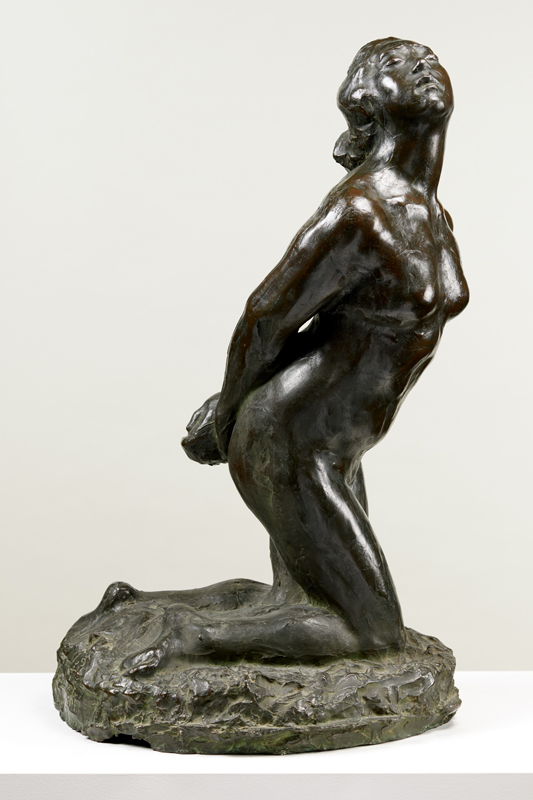
Photography by Otani Ichiro
Ogiwara Morie’s Woman, displayed in the center of this room, was shown at the 4th Bunten Exhibition (sponsored by the Ministry of Education) in 1910, where it earned great acclaim. The original plaster cast for this sculpture (collection of the Tokyo National Museum) is designated as an Important Cultural Property (for more on the issue of designating such casts, as pertains to the multiple character of cast sculptures, please see the special exhibition Secrets of Important Cultural Properties on the first floor.)
The charm of Woman lies above all in its magnificent structural expression of a pose in which the body spirals upward. With this in mind, here we have brought together works from the same period that express dynamism and vitality through the twisting of the body, including those of Auguste Rodin, whom Ogiwara admired. It is evident that even the slightest curving motion can create movement and flow within the space the work occupies. Compare it to the other works and try to wrap your mind around why Woman is considered a masterwork, as well as the reasons for the various poses adopted in each of the works.
Room 4 Six Months Before Sceneries in the Tropical Land
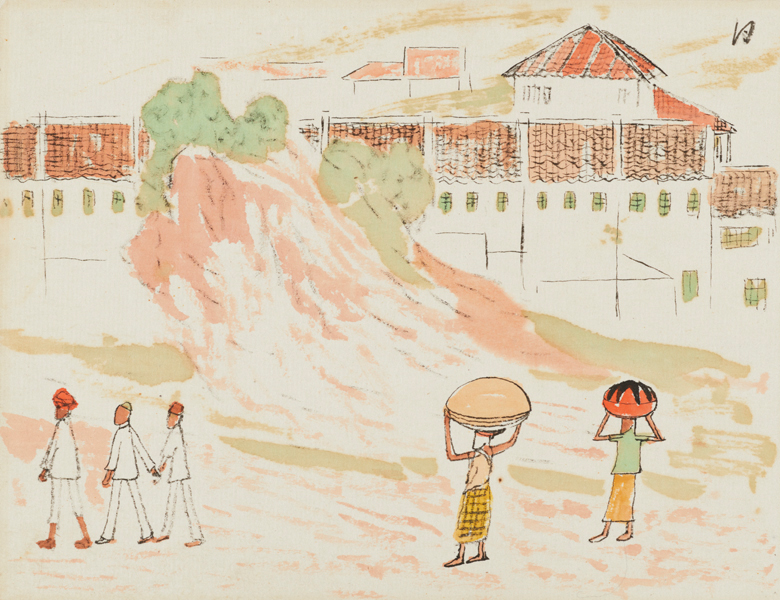
Imamura Shiko’s Sceneries in the Tropical Land (collection of the Tokyo National Museum), on view in the exhibition Secrets of Important Cultural Properties, was first exhibited in September 1914. Shiko had first stepped on Indian soil for the first time six months earlier, and had been fascinated by the atmosphere of everyday life in this country so different from his own.
Shiko’s itinerary is thought to have been as follows: the ship departed the port of Kobe on February 26, calling at Moji (Fukuoka, Japan), Hong Kong, Singapore, Penang (now Penang State, Malaysia), and Rangoon (now Yangon, Myanmar) before arriving in Kolkata, India. From Kolkata, he continued on to Gaya, Bihar, and Bodhgaya in the Indian interior. On the way back to Japan he traveled around the Jiangnan region of China, returning home around the end of May. We can know his itinerary in such detail, although he did not keep a journal, because the names of each place of note are inscribed in his Sketches from the Trip to India.
We would like to offer three tips for enjoying this sketchbook. One is to look for sketches that were later used in Sceneries in the Tropical Land. Second, check the Internet and compare the local scenery to how it looks today. And third, simply enjoy the sketches, which vividly convey the artist’s presence, for their own sake.
Room 5 New Acquisition & Special Display: Paul Klee’s Thoughts in Yellow

The Swiss-born artist Paul Klee (1879–1940) is highly popular in Japan. Klee’s broad appeal is due in part to the multifarious nature of his talent, as a theorist who taught at the German art and design school the Bauhaus (years of operation: 1919–1933), where his colleagues included Wassily Kandinsky and Johannes Itten, and as a versatile visual artist whose works have a musical quality (Klee was also a violinist of formidable skill). Many in Japan are familiar with his late-career drawings of angels, for which Tanikawa Shuntaro later wrote accompanying poems.
The museum acquired its first Klee piece, Flower Terrace, in 1987, and has since enriched its holdings of works by one of the overseas artists with the most significant influence on Japanese modern art. Thoughts in Yellow, which we acquired in fiscal 2021, was in a private collection for many years, and has seldom been seen in public since the late 1970s. It is with great pleasure that we unveil Thoughts in Yellow along with all 15 of the other Klee works in the museum’s collection, as well as works by others that bear strong relation to Klee.
3F(Third floor)
Room 6-8 1940s-1960s From the Beginning to the Middle of the Showa Period
Room 9 Photography and Video
Room 10 Nihon-ga (Japanese-style Painting)
Room to Consider the Building (Sol LeWitt, Wall Drawing#769)
Room 6 The War Years: Focus on Restored War Record PaintingsPainting War
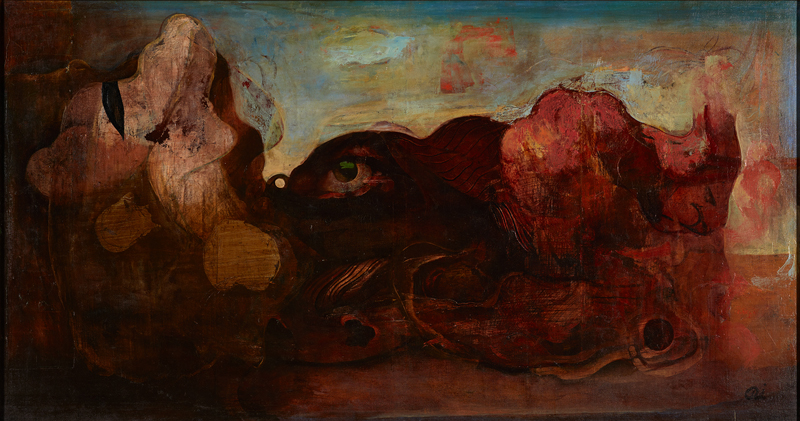
The 70th anniversary of the end of World War II was in 2015, and the numerous endeavors made that year to preserve and pass on memories of the war are still fresh in many people’s memories. The museum, which celebrates its 70th anniversary, opened in 1952, the year Japan regained its sovereignty after the postwar occupation. This section traces the 15-year period from the outbreak of the Second Sino-Japanese War (1937–1945), through World War II in the Asia-Pacific region, to the restoration of Japan’s sovereignty, through paintings made during each of these phases. Painters depicted war, sometimes directly as in War Record Paintings, and sometimes indirectly with imagery including landscapes, plants and animals, and human figures. Even when works appear at first glance to have nothing to do with war, if one considers the historical context of the year they were created, the artists’ views of society at the time and their psychological reactions become apparent. Please pause for a moment in front of each painting, created under the circumstances of unavoidable entanglement in war, to see how the artists faced various wartime realities and expressed them in their paintings while grappling with contradictions and conflicts between the state and the individual, society and art, chaos and everyday life.
Room 7 Playback: The Abstraction and Fantasy Exhibition (1953–1954)
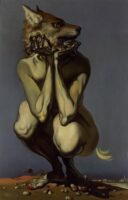
This museum opened in Kyobashi, Tokyo on December 1, 1952, the year after Japan regained its sovereignty following the postwar occupation. This section focuses on one of our important early exhibitions, Abstraction and Fantasy: How to Understand Non-figurative (Non-realistic) Painting (December 1, 1953 – January 20, 1954).
After opening with the inaugural exhibition Modern Japanese Art: Retrospective and Perspective of Modern Painting, the museum marked its first anniversary with the Abstraction and Fantasy exhibition, a new experiment in presenting works by contemporary artists on a specific theme, as opposed to the traditional practice of displaying well-known works side by side.
With the art critics Uemura Takachiyo and Takiguchi Shuzo as cooperating committee members, the exhibition was organized around two major trends in modern art, abstract art and Surrealism (or Fantastic Art). What were its contents like? In Room 7, visitors can experience a VR projection based on archival materials and records. Please take this opportunity to relive the innovative practices of the museum’s early days.
Room 8 Masters

Over the course of its more than 70 years of history, the National Museum of Modern Art, Tokyo has organized solo exhibitions featuring over 100 artists. Beginning with Kuniyoshi Yasuo in 1953, the year after the museum opened, and continuing through last year’s Ohtake Shinro exhibition, the museum has showcased artists from Japan and abroad who have left their mark on the history of modern art. While exhibitions follow various patterns, ranging from solo exhibitions of artists already in the collection to thematic group shows that connect to solo exhibitions, in all cases research, exhibitions, and acquisitions are organically linked. This section presents a selection of works, primarily oil paintings and sculptures, by Japanese artists who had solo shows at the museum between the postwar years and the 1980s.
The masters featured here had exhibitions in the following years: Saito Yoshishige (1978), Wakabayashi Isamu (1987, 1995), Arakawa Shusaku (1991), Tatsuno Toeko (1995), Muraoka Saburo (1997), Tsuchitani Takeshi (1998), Kusama Yayoi (2004), Kawaguchi Tatsuo (2009), Okamoto Taro (2011), Ikemura Leiko (2011), Kudo Tetsumi (2014), Takamatsu Jiro (2014–15), Yamada Masaaki (2016), Kumagai Morikazu (2017).
Room 9 Narahara Ikko, Where Time Has Stopped
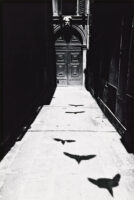
As part of the celebration of its 70th anniversary in December 2022, since last May the museum has been presenting works from its photography collection and tracing the museum’s history through them. This term, the last in the series, features a recent acquisition, Narahara Ikko’s series Where Time Has Stopped.
Narahara Ikko’s talent began drawing attention in 1956 with his first solo exhibition, Human Land. In his early years Narahara focused on postwar Japan’s unique historical circumstances, then in 1962 he went to Europe, where he encountered the profound depths of a civilization completely different from that of postwar Japan. The results of his nearly three-year stay culminated in a photo book published in 1967.
When Narahara suspended his activities in 2005 due to illness, he kept a set of prints that served as standard references for the printing of many of his major works. In order to prevent their loss or dispersal, MOMAT began acquiring them in 2008, and the approximately 500 works by Narahara the museum now possesses form a cornerstone of our photographic collection. Among them, this series, which was donated to the museum in 2020, was included in the Ten Artists of Contemporary Japanese Photography exhibition held here in 1966, and became part of the collection over half a century afterward.
Room 10 A Spring Festival of Folding Screens
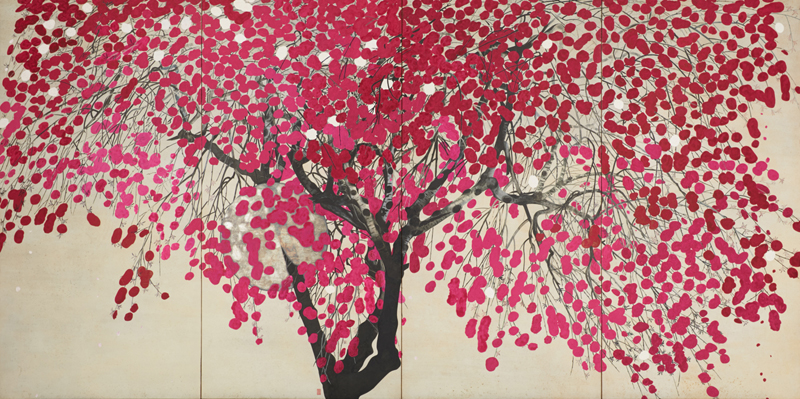
Each year, during the “Spring Festival in MOMAT,” we exhibit cherry blossom- and flower-related works, primarily Nihon-ga (Japanese-style paintings), so as to make our exhibitions of works from the museum’s collection a part of the Spring Festival. This year, in the area with glass cases, we present a special display of works on folding screens associated with cherry blossoms and flowers.
The number of people who use folding screens in their living spaces has certainly dwindled in the modern era. However, painters favor folding screens because (1) they are large, (2) they can be conveniently folded up and stored, and (3) the zigzagging panels of the screen create unique effects. This last is of particular interest, and we can see how skillful artists have taken into account the depth and movement created by the undulations of screens. To be sure, a folding screen is not just a flat surface. So, what is the nature of the depth and movement they create? To get a grasp of this, a tree with spreading branches is a basic and ideal subject. In this room, while savoring springtime in the paintings, visitors can also appreciate the effects created by shapes of folding screens, and the way in which Kodama Yasue’s ambient light – sakura is displayed in a corner where two walls meet in the front section of the room.
2F (Second floor)
Room 11-12 1970s-2010s
From the End of the Showa Period to the Present
Gallery 4 Secrets of Restration
Room 11 and 12 Renewing the Modern
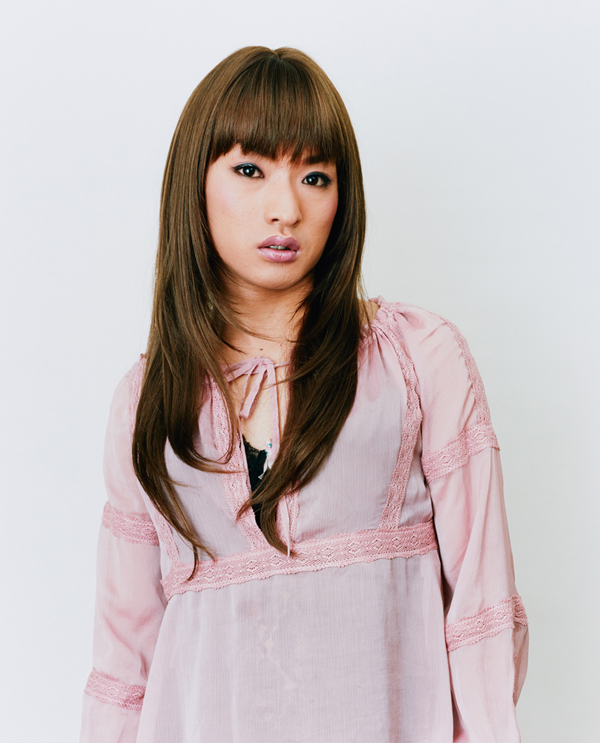
©Ryudai Takano, Courtesy of Yumiko Chiba Associates
The museum, which is celebrating its 70th anniversary, presents works acquired over the past 20-plus years since 2000.
The art exhibited here could be divided into two main categories. The first includes works by Ikemura Leiko, Sugito Hiroshi, Kato Izumi, Miwa Mitsuko, Chiba Masaya, Aoki Noe, and Okazaki Kanjiro that expand painting and sculpture in terms of subject matter and form, as well as Tomii Motohiro and Takayanagi Eri’s works that disrupt perceptions of everyday objects and actions by altering uses and shifting vantage points. In the second category are works that adopt critical perspectives on modern history and contemporary society, such as those of Shooshie Sulaiman and Yamashiro Chikako, who engage with the past and present of the communities in which they were born and raised; Kinoshita Susumu, who compellingly depicts illness and aging; Takano Ryudai, who questions the nature of normative sexuality; and Kaneko Hiroyo, who captures people from diverse backgrounds in the act of singing. The museum’s collection of modern art goes back to the late 19th century, and today, we look forward to seeing how it will continue to be renewed by contemporary artists in the 21st century.
About the Exhibition
- Location
-
Collection Gallery, from the fourth to second floors
- Date
-
March 17—May 14, 2023
- Time
-
10:00 a.m.—5:00 p.m. (Fridays and Saturdays open until 8:00 p.m.)
*Last admission: 30 minutes before closing. - Closed
-
Mondays (except March 27, May 1 and 8)
- Ticket
-
Online ticket is recommended to avoid lines forming at the entrance.
Online purchase: 【e-tix】
Tickets can be purchased on site at the ticket counters, subject to their availability. - Admission
-
Adults ¥500 (400)
College and university students ¥250 (200)- The price in brackets is for the group of 20 persons or more. All prices include tax.
- Free for high school students, under 18, seniors (65 and over), Campus Members, MOMAT passport holder.
- Show your Membership Card of the MOMAT Supporters or the MOMAT Members to get free admission (a MOMAT Members Card admits two persons free).
- Persons with disability and one person accompanying them are admitted free of charge.
- Members of the MOMAT Corporate Partners are admitted free with their staff ID.
- Discounts
-
Evening Discount (From 5:00 PM on Fridays and Saturdays)
Adults ¥300
College and university students ¥150 - Organized by
-
The National Museum of Modern Art, Tokyo


